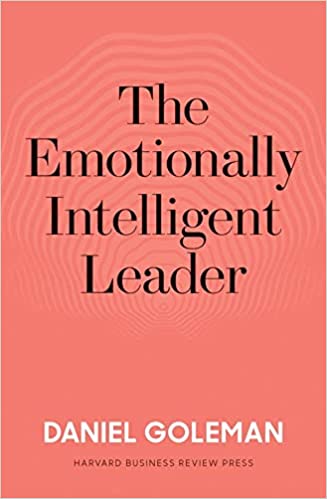The Fearless Organization: Creating Psychological Safety in the Workplace for Learning, Innovation, and Growth
RATING


In the book Fearless Organization, author Amy Edmondson explores the culture of Psychological Safety while providing a blueprint to facilitate and adapt your organization to incorporate the methodology outlined. With so much in today’s world riding on innovation, creativity and adaptability, retaining high level talent, keeping them happy, productive, and producing new ideas is a very difficult feat. Amy Edmondson is an experienced and respected member in this field who is the Novartis Professor of Leadership and Management at Harvard Business School and has been recognized by the biannual Thinkers 50 since 2011. Fearless Organization offers tangible solutions for teams and organizations who are serious about success in our ever-changing, modern world. This book offers a succinct case study-supported methodology of implementing a culture to help breed innovation and creativity. It offers a wonderful roadmap of developing a new culture and offers important elements critical to creating a healthy culture. The book starts with the importance of exploring the link between psychological safety and high performance. Next it describes and explains the deeply critical need to create an environment that encourages expression of new ideas, asking questions, and being able to take responsibility for mistakes. Finally, the book delves deep into the importance of engagement and candor required in today’s business landscape. These elements are all surrounded and supported by real world stories and examples of how silence is a killer of innovation and success in the workplace.
This book hits a very important issue right on the head. The very prevalent behavior of trying to fit in while going along with what others are doing is detrimental when trying to maintain a successful team and organization. This is becoming an increasingly discussed and open topic but is rarely laid out as coherently and clearly as it is in this book.
While the book is well written and takes a unique perspective, it does take a while to fully develop from a methodology perspective. It is filled with stories and case study examples of how silence from team members kills innovation and productivity and while those are great to give examples of what not to do, sometimes it felt like they went overboard.
The Fearless Organization: Creating Psychological Safety in the Workplace for Learning, Innovation, and Growth offers practical guidance for teams and organizations who are serious about success in the modern economy. With so much riding on innovation, creativity, and spark, it is essential to attract and retain quality talent―but what good does this talent do if no one is able to speak their mind? The traditional culture of “fitting in” and “going along” spells doom in the knowledge economy. Success requires a continuous influx of new ideas, new challenges, and critical thought, and the interpersonal climate must not suppress, silence, ridicule or intimidate. Not every idea is good, and yes there are stupid questions, and yes dissent can slow things down, but talking through these things is an essential part of the creative process. People must be allowed to voice half-finished thoughts, ask questions from left field, and brainstorm out loud; it creates a culture in which a minor flub or momentary lapse is no big deal, and where actual mistakes are owned and corrected, and where the next left-field idea could be the next big thing.
This book explores this culture of psychological safety, and provides a blueprint for bringing it to life. The road is sometimes bumpy, but succinct and informative scenario-based explanations provide a clear path forward to constant learning and healthy innovation.
- Explore the link between psychological safety and high performance
- Create a culture where it’s “safe” to express ideas, ask questions, and admit mistakes
- Nurture the level of engagement and candor required in today’s knowledge economy
- Follow a step-by-step framework for establishing psychological safety in your team or organization
Shed the “yes-men” approach and step into real performance. Fertilize creativity, clarify goals, achieve accountability, redefine leadership, and much more. The Fearless Organization helps you bring about this most critical transformation.
For aspiring or emerging leaders this is an incredibly valuable book to add to your repertoire. The importance of nurturing a healthy culture and environment for your employees and team members cannot be understated.
See content on this topic

Understand the value of a customer-oriented analytics package and how behavioral scenarios can be used to improve profitability through influencing behavior and usage.
To understand the principles of game dynamics and learn how to effectively use the elements of gamification in business: to involve customers, employees and contractors in the process.
Understanding branding and communications from the standpoint of emotional engagement and building relevant and meaningful dialogue with customers.
This course covers a complete view of customer touch points (both physical and virtual) and a unique model for standardizing and managing customer contact models across channels including approaches for customer feedback, quality management, and migration.
Experiential Branding & Communications – Improving Brand Integration Through Emotional Engagement.
This course covers a complete view of customer touch points (both physical and virtual) and a unique model for standardizing and managing customer contact models across channels.
Sales training for front line along with basic development and coaching principles for line management.
Understanding how leaders must evolve with relation to the evolution of business models, new management models, and the significant changes to the workforce with Digital Natives now making up more than 50% of the workforce globally.
Understand the theory and mechanics of developing and managing a customer-centric and experience-driven corporate culture that is consistent and stable and includes elements of Employee Experience (EX) and Employee Relationship Management (ERM).
Understanding the evolution of leadership styles, management models, organizational structures, performance measurement and guiding change in the evolution of business models from product-centric to customer-centric and even relationship-centric.
Understand how to manage both internal and external digital transformation while considering the landscape for digital business models and the effect on traditional business models. Understanding organizational readiness for transformation and the role of corporate culture in managing transformations.
The changes in consumer behavior, employee behavior, and the evolution of business models in the digital age cause significant difficulties and imperatives for leaders who must develop new skills and evolve their leadership styles to be effective in this fast changing, challenging, and competitive environment.




 Copy Link
Copy Link
 E-mail
E-mail
 LinkedIn
LinkedIn
 Facebook
Facebook
 Telegram
Telegram
 WhatsApp
WhatsApp
















 Go Back
Go Back
Leave a Reply
You must be logged in to post a comment.